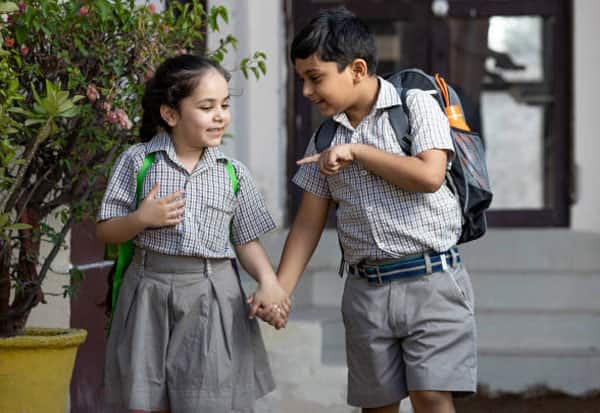/
செய்திகள்
/
Kalvimalar
/
Articles
/
Understanding Good Touch and Bad Touch: A Vital Conversation for Children
/
Understanding Good Touch and Bad Touch: A Vital Conversation for Children
Understanding Good Touch and Bad Touch: A Vital Conversation for Children
Understanding Good Touch and Bad Touch: A Vital Conversation for Children
நவ 09, 2024 12:00 AM
நவ 09, 2024 12:00 AM

Sexual harassment against children is a distressing issue that we hear about daily. Unfortunately, many children fail to speak up due to their limited understanding of the situation and the fear of scolding from parents or teachers. This silence often leads to unfortunate incidents.
It's essential to begin educating children about the concept of good touch and bad touch both at home and in schools. Parents should introduce this topic to both boys and girls as early as age three.
How to Teach Children About Touch
A helpful way to explain these concepts is by using toys that children are familiar with. For example, dolls can be used to demonstrate body parts and discuss which parts of the body are safe to touch and which are not. Children should understand these boundaries so that if they experience bullying or inappropriate behavior, they have the courage to speak out.
Parents should avoid feeling embarrassed about these conversations. If we hesitate, children may internalize feelings of guilt and remain silent when they face uncomfortable situations. It's crucial to talk to them openly, creating a safe space where they feel confident sharing anything with their parents.
What Constitutes 'Good Touch' and 'Bad Touch'?
Good touch includes handshakes, pats on the back or shoulders as compliments, or gentle touches like a pat on the head. However, if someone touches a child in an uncomfortable manner, such as holding hands or rubbing their shoulders inappropriately, it qualifies as bad touch. Other forms of bad touch include physical aggression like hitting, kicking, or pinching.
Inappropriate touching, such as touching the lips, chest, stomach, private parts, or thighs, should be strictly prohibited. Children need to understand that no one has the right to touch these areas, and any attempt should be reported immediately to parents or school authorities.
In contrast, if a child needs medical attention due to an accident or injury, such as being attended to by a doctor in the presence of a parent, it is not considered bad touch.
Teaching Children to Protest and Speak Up
It's crucial to teach children how to say “don't touch” when someone tries to touch them inappropriately. They should be encouraged to scream for help, run away from the situation, and tell their parents or a trusted adult about any misconduct, whether at school or by relatives.
Helpline for Support: 1098
Parents must act decisively and calmly if they suspect their child is experiencing harassment. Immediate reporting to the authorities is necessary to protect the child. If reluctant to involve the police directly, parents can call the women and children's helpline (1098), where trained professionals will provide support, investigate the matter, and take appropriate action.
It is alarming that in India, 1 in 5 girls and 1 in 20 boys are sexually abused every minute. Experts emphasize the importance of initiating these conversations early to prevent fear and empower children with knowledge and confidence.
Instilling Courage and Respect
Nurturing courage in girls and teaching boys to respect women will help foster a generation that upholds dignity and safety. Educating our children about good and bad touch is a step toward creating a safer environment for everyone.


